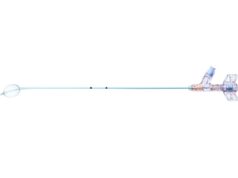
A meta-analysis, recently published in Osteoporosis International, has found that the application of percutaneous vertebroplasty (PVP) is safe and effective only in patients with acute osteoporotic vertebral compression fractures (OVCFs) having persistent and severe pain. The investigators recorded no benefits among patients with older fractures or those bearing non-severe symptoms.
According to the authors, S Lou (The First Affiliated Hospital of Harbin Medical University, Heilongjiang, China) and colleagues, OVCFs are common in the elderly population and are often treated using PVP. However, the effectiveness of PVP reported by various randomised controlled trials (RCTs) is inconclusive. This study therefore aimed to analyse, from published literature, the efficacy and safety of PVP for OCVFs.
Lou and colleagues conducted searches in Medline, EMBASE, and Cochrane Libraries since their respective inceptions on 1 January 2019 for RCTs of OVCFs treated with PVP compared with non-operative treatment. The primary outcomes were pain relief at one to two weeks, one to three months, and six to 12 months. The secondary outcome was the rate of occurrence of new vertebral fractures, and the meta-analysis was performed using a random effect model.
The investigators included a total of 12 RCTs, comprising 1,624 patients, in the analysis. For the blinded studies, they found statistical differences between PVP and the sham injection group for the three primary outcomes in the subgroup of the Vertebroplasty for acute painful osteoporotic fractures (VAPOUR) trial. Although pain scores were similar between the PVP group and the sham injection group for the VAPOUR trial at each period, the effect size of PVP increased over time.
They found that in the open label studies, PVP significantly reduced pain at all the time points, and that the risk of the new vertebral fractures was similar between the PVP groups and control groups.
Due to certain limitations of the meta-analysis, Lou and colleagues warn that the results should be “interpreted cautiously”. They note, for example, methodological limitations in the quality of the original studies, such as the unclear random method, the unclear concealment of the treatment allocation, and the inadequate blinding.
In addition, the possibility of publication bias might exist because of the ongoing and unpublished trials, although no statistical evidence for this was detected.
They also note that while the baseline of pain scores and duration of fracture might be key factors affecting the PVP, there might be other clinically relevant but unreported confounding factors, such as the types of patients, the degree of bone mineral density, and the types of PVP techniques. Moreover, owing to the limited studies, whether the baseline of pain scores and duration of fracture truly affect the PVP “still needs to be determined by further trials”.
Considering the direction of future research, the investigators suggest that it should “focus more on [patients with acute OVCFs and experiencing severe pain] and use more consistent inclusion criteria”. They suggest, for example, that each study should add the confirmation of OVCFs with magnetic resonance imaging (MRI) to the inclusion criteria and use the same threshold of the baseline scores for patient eligibility.
Lou and colleagues also suggest that, since they determined that the baseline information could affect the effect of PVP, further studies “should clearly report the baseline information, such as the duration of back pain, the baseline pain scores, the methods of non-operative therapy, the PMAA volume, and the baseline T-scores, and other clinically relevant factors, to find the association between these factors and PVP.”
Finally, they indicate that a longer follow-up—more than 12 months—with a large enough sample size is “necessary for further studies to determine the long-term therapeutic effects of PVP”.












